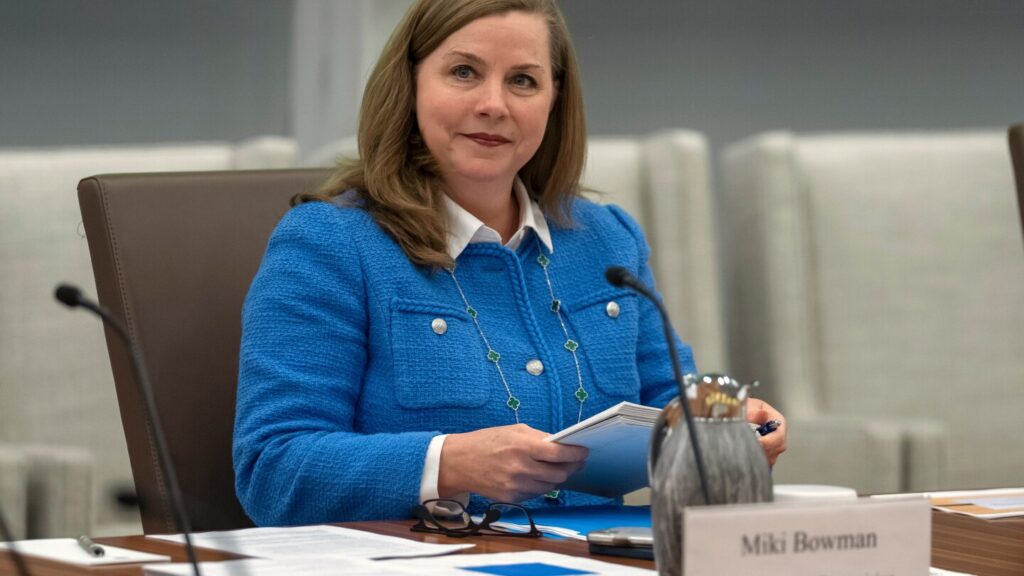WASHINGTON (AP) — The Federal Reserve’s top banking regulator on Tuesday released new guidelines for the agency’s supervision of the financial system, earning praise from industry trade groups and criticism from her predecessor.
In a set of sweeping changes, the principles call for bank examiners to focus on material financial risks and to “not become distracted from this priority by devoting excessive attention to processes, procedures, and documentation.” The guidelines are set out in a memo originally distributed to Fed employees Oct. 29 but released Tuesday.
Michelle Bowman, the Fed’s vice chair for supervision, said the principles will “sharpen” the central bank’s focus and build “a more effective supervisory framework.”
“By anchoring our work in material financial risks, we strengthen the banking system’s foundation while upholding transparency, accountability, and fairness,” Bowman said in a written statement. Bowman was named vice chair by President Donald Trump in March.
Since Trump took office, federal bank regulators have been rolling back regulations that govern the nation’s banking system and other financial services companies. The Consumer Financial Protection Bureau, created after the 2008 financial crisis, is effectively not operating presently and has negated several of the regulations it put into place under President Joe Biden.
Also Tuesday, Fed governor Michael Barr, who preceded Bowman as the vice chair for supervision, sharply criticized the changes in banking oversight at the Fed and at other agencies this year.
“We are now, I believe, at a moment of inflection in the regulatory and supervisory approaches that help keep banks healthy,” Barr said in a speech. “There are growing pressures to weaken supervision … in ways that will make it harder for examiners to act before it is too late to prevent a build-up of excessive risk.”
The announcement by the Fed matches a similar move by the Office of the Comptroller of the Currency, which also loosened how it measures risk among the banks it supervises as well as removed issues like reputational risk from how examiners look at the banks.
Under the Fed’s new rules, banks can only be tested for material risks to their businesses or balance sheets, such as bad loans or unsound business practices. Banks will also able to self-certify on certain risk and supervision issues. These changes have been among the top priority for the banking industry since President Trump was elected into office.
“Banks are most resilient when their examiners prioritize material financial risks, not check-the-box compliance exercises,” said Greg Baer, president and CEO of the Bank Policy Institute.
Under the new framework, the Fed will also defer to other major bank regulators, including the OCC and state-level regulators, when it comes to who should supervise and examine these institutions.
Bowman has also moved to reduce the Fed’s regulatory staffing by about 30%, mostly through attrition, a step Barr also criticized Tuesday.
The cuts “will impair supervisors’ ability to act with the speed, force, and agility appropriate to the risks facing individual banks and the financial system,” Barr said. “Such a drastically reduced staff will slow response time for the public and the banks themselves, limit supervisory findings and enforcement actions, and erode supervisors’ ability to be forward-looking.”

